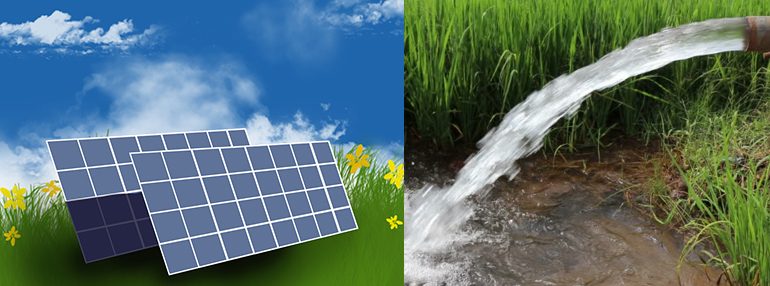With fast depleting fossil energy resources, the need for alternate energy sources assumes great significance in today’s time and tops the list priorities of many countries. India, being a power starved country is giving focus on solar energy now and put in place the necessary policy frameworks for renewable energy sector particularly for solar energy keeping the farm sector in the ambit of policy framework as a key beneficiary.
Solar energy is considered to be the best form of renewable energy abundantly available in many countries including India, however, tapping solar energy remained a challenge till recent times. But advancements in power electronics technologies have opened up new avenues making it possible to tap solar energy in a more effective manner.
Since eco friendly sustainable energy is very important for the futuristic growth and sustainability of the country, it is imperative to work on sustainable initiatives with well-defined goals. Solar energy applications in agriculture irrigation, which plays a key role in the development of Indian rural economy. Realizing the potential, Government of India had come out with a mega scheme, namely PM-KUSUM which has plans to establish solar energy capacity up to 25.75 GW for agriculture in the next 2-3 years. The scheme target has been further revised now upwardly to 30.8 GW and the scheme has following three components:
Component-A: Setting up of 10,000 MW of Decentralized Ground/ Stilt Mounted Grid Connected Solar or other Renewable Energy based Power Plants
Component-B: Installation of 20 Lakh Stand-alone Solar Agriculture Pumps
Component-C: Solarisation of 15 Lakh Grid Connected Agriculture Pumps
The ambitious scheme offers 30 percent financial assistance by central government and 30 percent by state governments to the farmers making the scheme attractive and affordable. Investment by the governments in solar energy for agriculture will substantially reduce the power subsidy burden of the government and the distribution companies in the long run. It would also help the environment by preventing millions of tonnes of CO2 that would have been released through traditional coal based power generation.
As far as Indian villages are concerned, solar energy can offer energy access to millions of farmers who do not have grid access which will be a blessing to them. Energy access to irrigation means a lot for the rural community which will further boost the agriculture activities, employment and quality of life in the rural areas. Further the initiative would drive economic activities with more industrial players joining hands with government to execute the project of such a magnitude.
Given the power situation in rural India, the standalone solar water pumping system under Component B is the best solution as it can offer power to the remotest terrains where there is no grid connectivity. This is a big idea and a major differentiating factor if the governments consider allocation of enough funds for solar water pumping segment. If the government comes up with feasible funding plan for large scale adoption of solar pumps, it can bring revolutionary changes in the Indian agricultural landscape. It will also improve the quality of life of rural India and will have positive impact on the GDP.
Currently extreme inefficiency of old agricultural pumps operating in farms is a matter of concern. These pumps waste 85-90 percent of the subsidized grid power as per a FICCI survey. Therefore switching to solar pump would be the best and sustainable solution which can stop wastage of electric power and save crores of rupees. India has 18 million electrical agri-pumps, 9 million diesel agri-pumps and about 5 million farmers are in the waiting list of 3-phase electrical connection for running their agri-pumps. As per the government of India, official figure for un-electrified and partially electrified villages in India crosses 4 lakh.
Meanwhile, grid connected solar pump would be another alternative where surplus power generated by solar pumping system can be fed directly to the grid that will substantially reduce burden of energy bills. Scaling up of solar powered pumps across India needs attention of the government, energy bodies and other stakeholders so that it positively impacts agriculture, government power subsidies, employment, livelihood and environment. Being a leader in this segment pumps manufacturing companies such as Shakti Pump is fully equipped to meet the demands of solar powered water pumps from domestic or overseas markets with its installed capacity of 5 lakh pumps per annum including solar powered pumps.
The author is chairman FICCI Madhya Pradesh State Council & Managing Director Shakti Pumps





